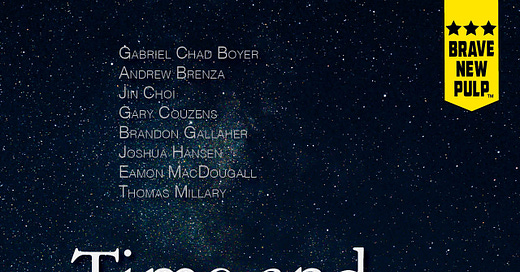Time, Life, Consciousness: an Emergent Symbiotic Interaction
(Any semblance of this title to Douglas Hofstadter's "Gödel, Escher, Bach: An Eternal Golden Braid" is entirely intentional;
(Author’s note: today (July 12, 2024) marks the launch of “Time and Propinquity”, an anthology edited by Mike Sauve and David Mathew. It contains this essay.)
Being is not a thing, thus nothing temporal, and yet it is determined by time as presence. Time is not a thing, thus nothing which is, and yet it remains constant in its passing away without being something temporal like the beings in time. Being and time determine each other reciprocally, but in such a manner that neither can the former—Being—be addressed as something temporal nor can the latter—time—be addressed as a being. As we give thought to all this, we find ourselves adrift in contradictory statements.
Martin Heidegger, ‘On Time and Being’
When asked about today’s greatest mysteries, scientists and philosophers will mention many things, but chances are time, life and consciousness get a large share of these mentions1. So, let’s begin with time. What is time? What really is time? There is no clear, all-explaining definition of it.
At the smallest scale of our existence, which we have dubbed the quantum level, there does not seem to be a phenomenon such as time. When some physicists—like, for instance, Julian Barbour2— say that ‘time does not exist’, what they really mean (I think) is that time is not a primary, or even better: an elementary phenomenon3.
At the quantum scale, there are only elementary particles and elementary forces involved in elementary interactions. Even as some of these interactions (quantum entanglement, the results of the double slit experiment) are poorly understood, what does seem to be a feature of these interactions is that they are symmetrical; that is, they can go each way, they are fully reversible. There is no elementary force or principle that dictates the ‘direction’ of an interaction. Therefore, as such, time does not seem to exist on the quantum level.
So far, so good. But all these interactions do change the way these elementary particles—and their stable configurations like atoms and molecules—are arranged. When an arrangement of atoms or molecules displays a regular structure—that is, when the mutual arrangement is repeated many, many times—then we call it ordered. If the arrangement does not have that quality, we call it disordered.
(Support writing and either buy the anthology or become a paid subscriber…;-)
Keep reading with a 7-day free trial
Subscribe to The Divergent Panorama to keep reading this post and get 7 days of free access to the full post archives.





